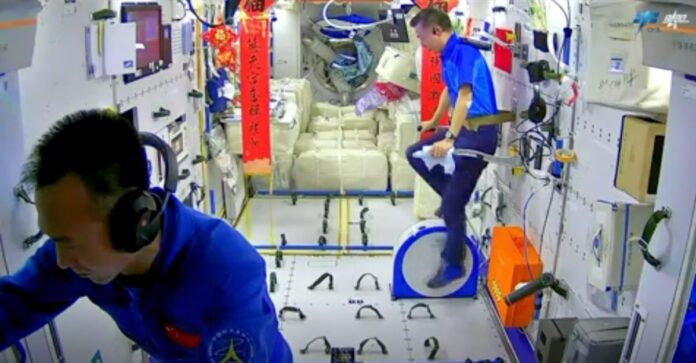China has selected the astronauts that will fly a pair of crewed missions to its Tiangong space station this year.
China will later this year send two crews to the now fully operational Tiangong to spend six months in orbit conducting science experiments and keeping the space station maintained.
Two three-person crews have been selected for the Shenzhou 16 mission, due to launch in May, and the following Shenzhou 17 mission, launching six months later. The missions will lift off atop Long March 2F rockets from Jiuquan in the Gobi Desert.
Related: The latest news about China’s space program
Each mission also has a backup crew selected that will be ready to fill a position in the primary crew, if required.
“Before the start of the spaceflight mission, we will select the astronauts one or one and a half years in advance, including the astronauts who will perform the mission and the backup crew,” Yang Liwei, deputy chief designer of China’s human spaceflight program, told Chinese broadcaster CCTV.
“Now we’ve basically conducted astronaut selection for two missions together, and will select a backup crew,” added Yang, who was also China’s first astronaut in space.
Previously, the China Manned Space Agency (CMSA) would send a backup crew for a mission to space on the following flight. This appears to have changed and likely reflects the shifts required to adjust to launching crewed missions every six months.
China previously had a gap of nearly five years between 2016’s Shenzhou 11 mission and Shenzhou 12, which marked the first visit to the Tiangong station’s core module back in 2021.
One thing that has not changed is China keeping the identities of the astronauts hidden until close to launch. Typically, CMSA, which is overseen by the People’s Liberation Army, only reveals a crew via a press conference a day before launch.
China recruited a third batch of new astronauts back in 2020. The 18 people — 17 men and one woman — should have completed basic training by now and could be eligible to fly in 2023. Their identities are not yet known.
CMSA began recruiting a fourth batch of astronauts in October. “Our first batch of astronauts selected were initially pilots from the air force, and now our astronauts come from colleges, universities, research institutions, engineering departments and the Chinese Academy of Sciences. People from all walks of life are eligible for selection,” Yang said.
Follow us on Twitter @Spacedotcom (opens in new tab) and on Facebook (opens in new tab).

